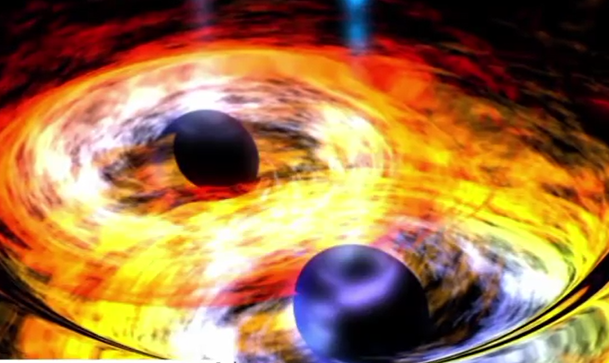(单词翻译:单击)
When you think of space exploration, NASA or the European Space Agency probably leap to mind.
当你思考太空探索时,跳入脑海的可能是宇航局或欧洲太空总署。
But a lot of incredible missions come from other parts of the world, too.
但许多不可思议的任务也来自世界的其他地方。
Like, Japan's JAXA returned the first samples from an asteroid,
比如,日本宇航探索局从一颗小行星上带回来第一个样本,
and Russia's Roscosmos has a flawless record delivering astronauts to the International Space Station.
俄罗斯太空总署在将宇航员送入国际太空站方面保持零失误记录。
One country you may not have thought of is India, but the Indian Space Research Organisation, or ISRO,
有一个国家你可能想不到,那就是印度,但印度太空研究组织(ISRO),
is on its way to becoming a leader in space exploration, and they're just getting started.
正在成为太空探索的领军人物,他们才刚刚开始。
When it comes to launching spacecraft, ISRO has a great track record.
提到发射宇宙飞船,ISRO有良好的记录。
Back in February, they made global headlines when a single Indian rocket launched 104 satellites, a new record.
这要从二月说起,印度在用一枚火箭发射了104颗卫星之后登上世界新闻的头条,这是一个新纪录。
Most were shoebox-sized cubesats, but the rocket successfully put them all on the right paths,
这些卫星大部分都是鞋盒大小的立方体,但火箭却成功地将它们全部送到了正确的轨道上,
one every few seconds, all while traveling at more than 27,000 kilometers per hour!
几秒一个,时速超过两万七千公里!
Thanks to their growing reputation, these satellites came from all over the world,
由于印度不断增加的名望,这些卫星来自于世界各地,
including the U.S., Switzerland, Israel, and Kazakhstan.
包括美国、瑞士、以色列和哈萨克斯坦。
In 2008, ISRO also sent their first spacecraft to the moon,
2008年,ISRO也向月球发射了第一个宇宙飞船,
where it did some basic science and proved their technology worked.
它在月球上做了些基本的科学研究,证明他们的技术有用。
But they truly arrived on the world space scene in 2014,
但他们真正进入国际太空的舞台是在2014年,
when their Mars Orbiter Mission entered orbit around, you guessed it, Mars.
在他们的火星轨道探测器进入轨道的时候,你猜对了,是火星。
That put them in a tiny club of interplanetary nations alongside Russia, the U.S., and the European Union.
这使得他们跻身于由俄罗斯、美国和欧盟组成的星际国家小俱乐部。
And on top of that, ISRO were the only ones to get into Mars orbit successfully on their first try!
最重要的是,ISRO是唯一一个在首次尝试中就成功进入火星轨道的国家机构。
That by itself was a real accomplishment,
这本身就是一项真正的成就,
but ISRO also had big plans to collaborate with NASA's MAVEN spacecraft.
但是ISRO也有与宇航局的MAVEN太空飞船合作的宏伟计划。
MAVEN showed up at Mars at about the same time,
MAVEN差不多与ISRO的探测器同时出现在火星上,
and both orbiters were tasked with studying the thin Martian atmosphere.
两者的任务都是研究火星的稀薄大气。
While MAVEN's orbit was designed to skim near the planet,
MAVEN设计的轨道是在行星附近掠过,
the orbit for the ISRO mission could take the spacecraft more than 500 times farther away,
而ISRO的航天器轨道比前者远了500多倍。
allowing researchers to piece together a complete view of the atmosphere.
能允许研究人员拼凑出完整的大气视图。
The Mars Orbiter Mission even contained a key piece of technology NASA's satellite didn't have: a methane detector.
火星轨道探测器任务甚至包含一项宇航局卫星都没有的关键技术:甲烷检测器。
Here on Earth, methane is primarily created from life, like farting and burping cows,
在地球上,甲烷主要是由生物产生的,比如牛放屁和打嗝,
and with ISRO's methane detector, researchers hoped to map the global distribution of the gas all around Mars.
因为它有甲烷检测器,研究人员希望能够绘制出火星周围大气的全球分布。
At least, that was the plan.
至少,这是个计划。
Unfortunately, because just getting to Mars is such a challenge,
不幸的是,因为进入火星挑战巨大,
ISRO considered the whole mission a so-called "technology demonstration".
ISRO认为整个任务就是所谓的“技术示范”。
So most of their efforts went into things like interplanetary communication… not scientific instruments.
所以他们的大部分努力都投入到了星际交流这样的事,而不是科学器材。
Some of their equipment worked great, but things probably didn't turn out so well for the methane detector.
一些仪器工作良好,但甲烷检测器不是这样。

As of 2016, the mission hadn't found any methane in the Martian atmosphere.
因为到了2016年,探测器还没在火星大气中找到任何的甲烷。
But since other missions, like Curiosity, have found trace amounts of it,
但由于其他的探测器,比如“好奇号”发现了微量的甲烷,
that could mean the ISRO orbiter just wasn't sensitive enough, or that there was another issue.
所以可能意味着ISRO轨道探测器不够灵敏,或存在着其他问题。
Now, ISRO is developing a much more capable Martian satellite, so they could learn a lot more in the 2020s.
现在,ISRO正在研发一个更有能力的火星卫星,这样他们到了21世纪20年代就能了解更多信息了。
And the ESA and Roscosmos's Trace Gas Orbiter will be investigating the methane situation in the meantime.
与此同时,欧洲太空总署与俄罗斯太空总署的火星微量气体探测器将会调查火星的甲烷情况。
Still, ISRO's first Mars mission was a success in a lot of way,
不过,ISRO的首次火星任务在很多方面仍很成功,
and the organization is now ready for even more exploration.
现在它准备做更多的探索。
And until then, they're also making major contributions to astronomy,
在此之前,他们还对天文学做出了重大贡献,
with a space telescope called AstroSat that launched in 2015.
2015年,他们发射了一个名为AstroSat的太空望远镜。
You can think of AstroSat kind of like a mash-up of NASA's Hubble Space Telescope and Chandra X-Ray Observatory.
你可能认为AstroSat有点儿像宇航局哈勃天文望远镜与钱德拉X射线天文台的混搭,
It's way smaller than either of those, but can still accomplish something really cool:
它比两者任何一个都小,但成就斐然:
observing a single astronomical source in a whole bunch of wavelengths at once!
它能在一大堆波长中同时观测一个天文射频源!
"Astronomical source" is just fancy science-talk for something in space that emits, well, anything.
“天文射频源”是一种假设的科学说法,指的是太空中放射任何东西的物体。
In this case, AstroSat can find something we see in the sky
这种情况下,AstroSat能发现我们在天空中看到的某些东西
and study it in visible, ultraviolet, and X-ray light, all at the same time!
同时在可见光、紫外线、X射线中研究它。
To do something like that with Hubble and Chandra would require tons of coordination,
如果是哈勃天文望远镜和钱德拉X射线的话,得需要它们相互协调,
but AstroSat makes it happen for everything it looks at.
但AstroSat自己就做到了,能观察到它们看到的一切。
And earlier this year it contributed behind the scenes to a story you probably heard a lot about.
今年早些时候,它在幕后促成了一个你可能经常听说的故事。
This June, LIGO detected gravitational waves, or ripples in space-time caused by merging black holes, for only the third time.
今年6月,LIGO探测到了引力波,或者是由黑洞合并引起的时空涟漪,这是第三次了。
And a day after they detected them, an observatory in Hawaii saw a flash in the very same part of the sky.
一天之后,夏威夷的一个天文台在天空的同一区域看到一道闪光。
At first, scientists thought this flash was probably the afterglow of the merging black holes, but it wasn't.
起初,科学家们认为这一闪光可能是合并黑洞的余辉,但它不是。
Follow-up observations from AstroSat helped determine that a distant gamma ray burst, probably from a supernova,
来自AstroSat的后续观察帮助科学家确定了它可能是来自遥远超新星的伽马射线暴,
had just happened to appear in the same part of the sky at almost the exact same time.
只是碰巧在同一时间出现在天空的同一区域。
Talk about astronomical odds, am I right?
说到了天文几率,对吗?
Without AstroSat, it probably would have been a lot harder to figure out what that flash was.
没有AstroSat,我们可能很难确认这道闪光是什么。
Squishing two space telescopes into one is just one example of how ISRO puts its own unique twist on space exploration,
把两个太空望远镜压成一个是ISRO如何在太空探索中独树一帜的一个例子,
and they're not slowing down anytime soon.
而且他们在短期内不会放缓。
In addition to their planned Mars mission,
ISRO除了计划的火星任务外,
ISRO is getting ready to land on the Moon, and is working on missions to explore Venus, the sun, and even Jupiter.
也在准备登陆月球,致力于探索金星、太阳和木星的任务。
It's an ambitious plan, but they're off to a great start
这是一个雄心勃勃的计划,但他们有一个良好的开端,
and when it comes to exploring space, it's always the more, the merrier!
谈到太空探索的话,总是越多越好的吧!
Thanks for watching this episode of SciShow Space,
感谢您收看本期的太空科学秀,
and special thanks to our patrons on Patreon for making it happen!
特别感谢Patreon的大力支持!
If you'd like to support the show, you can go to patreon.com/scishow.
如果你也想支持此节目,就登陆patreon.com/scishow吧!


